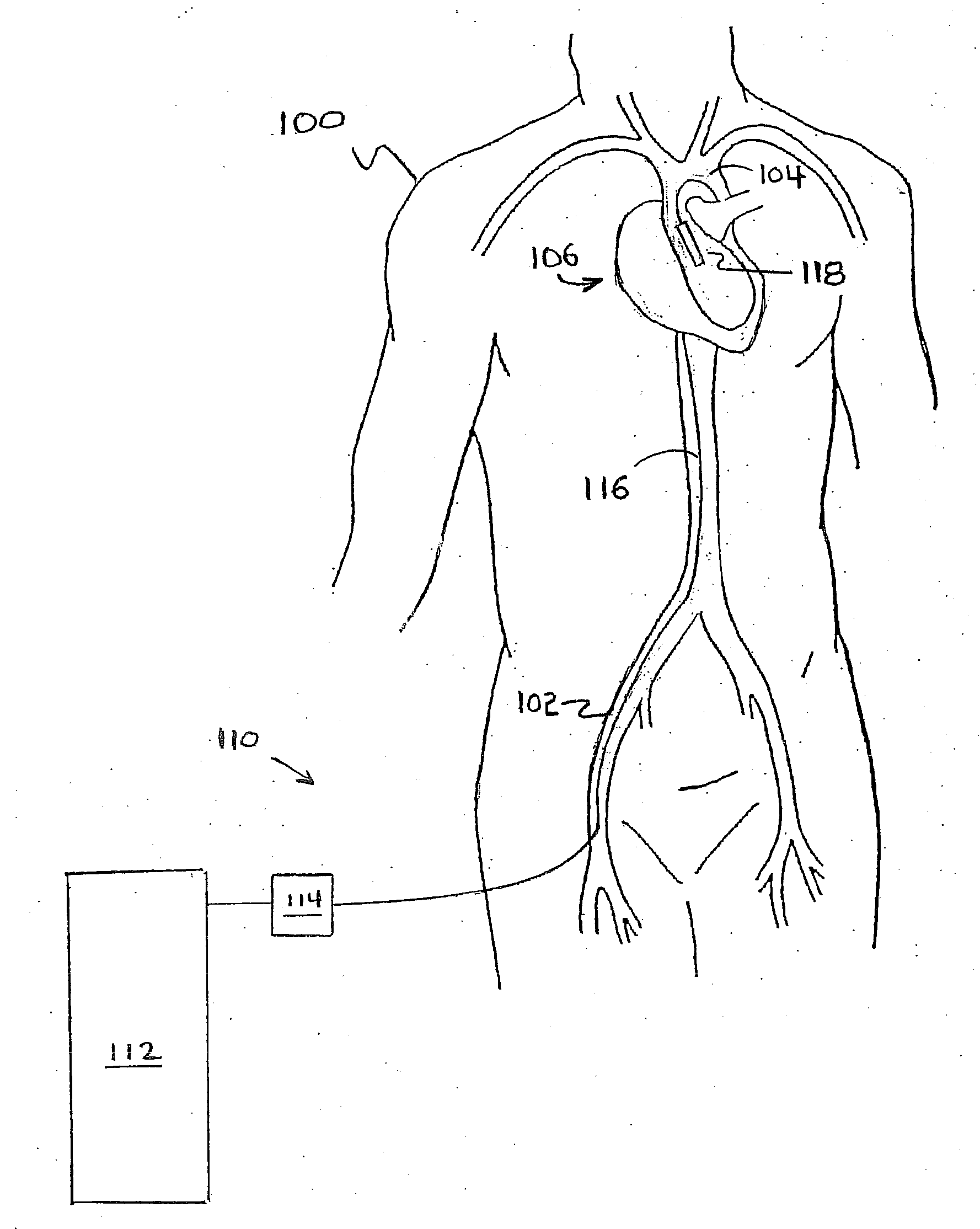Method for Deployment of a Medical Device
a medical device and deployment method technology, applied in the field of cardiac arrest devices, can solve the problems of difficult to achieve average flow, and achieve the effects of reducing radial and bending load, reducing friction, and reducing the generation of particulates
- Summary
- Abstract
- Description
- Claims
- Application Information
AI Technical Summary
Benefits of technology
Problems solved by technology
Method used
Image
Examples
Embodiment Construction
[0081]The following terms are defined for use in this Specification, including the appended claims:[0082]Distal means relatively further from a first end of a torque transmission line that connects a motor to a pump assembly in cardiac-assist device 110. The motor is located at the first (proximal) end of the torque transmission line.[0083]Proximal means relatively closer to the first end of the torque transmission line.[0084]Proximate means “near to.”[0085]Axial means an axis or direction that is coincident with a centerline (of a device) and contrary to “radial.”[0086]Operatively coupled means that the operation of one device affects another device. For example, if a drive cable is “operatively coupled” to an impeller, it is capable of driving the impeller (i.e., causing the impeller to rotate). Operatively coupled devices need not be directly physically coupled.
Other definitions may be provided later in this disclosure.
[0087]FIG. 1 depicts a silhouette of human torso 100. Heart 1...
PUM
 Login to View More
Login to View More Abstract
Description
Claims
Application Information
 Login to View More
Login to View More - R&D
- Intellectual Property
- Life Sciences
- Materials
- Tech Scout
- Unparalleled Data Quality
- Higher Quality Content
- 60% Fewer Hallucinations
Browse by: Latest US Patents, China's latest patents, Technical Efficacy Thesaurus, Application Domain, Technology Topic, Popular Technical Reports.
© 2025 PatSnap. All rights reserved.Legal|Privacy policy|Modern Slavery Act Transparency Statement|Sitemap|About US| Contact US: help@patsnap.com



